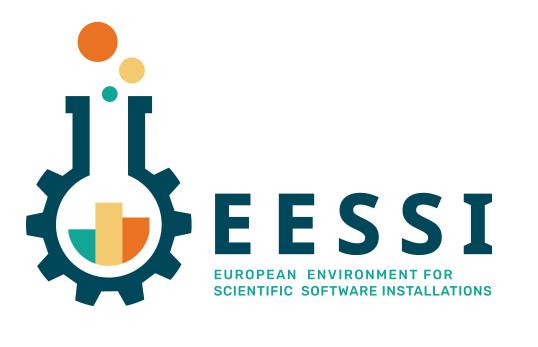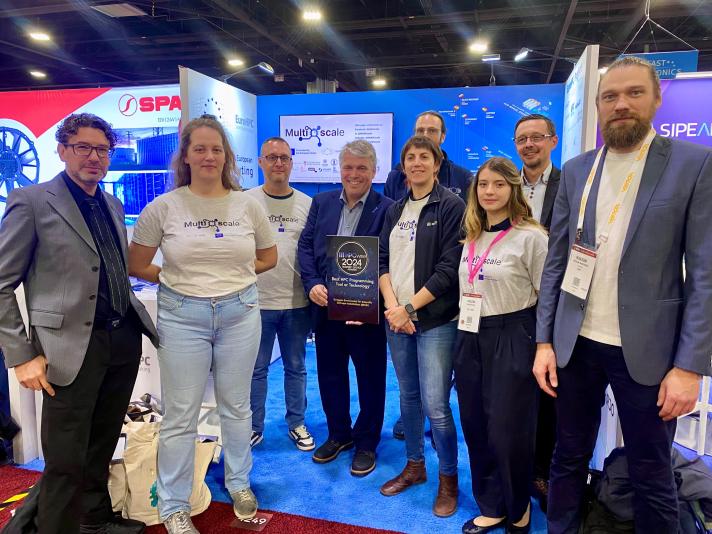Imagine a researcher as a professional photographer and their supercomputer as a high-end camera. Every time they arrive at a new location, they must assemble all their gear from scratch—choosing the right lenses, calibrating settings, and tweaking everything for the environment they find themselves in. This tedious setup takes away valuable time that could be spent capturing stunning images.
Now imagine having a fully optimised photography rig that is always ready to go. Whether they are shooting in a controlled studio, out in the field, or even on-the-go with a mobile setup, everything is preconfigured to deliver the best results immediately. This allows the photographer to focus on what truly matters—taking exceptional photos or, in the case of researchers, running groundbreaking scientific workloads.
EESSI provides researchers with a ready-to-go software stack they can work with anywhere. Since being awarded EuroHPC funding in 2023, EESSI has delivered a freely available digital infrastructure created and maintained in Europe, providing researchers with a common stack of scientific software installations at no cost.
Improving the productivity of researchers in this way is important because we all benefit from a world where scientists and engineers have the maximum amount of time for doing what they do best, whether that be rapidly developing medicines like vaccines, designing better batteries, or predicting extreme weather events.
How it all started...
The European Environment for Scientific Software Installations (EESSI) grew out of the EasyBuild community (users of the EasyBuild framework for software management on HPC systems). It began in 2020 as a reaction to the growing diversity of both hardware system architectures (like supercomputers) and the rapid expansion of software used for scientific workloads. Despite the availability of community tools like EasyBuild, which automates the installation process, user support teams at European supercomputing centres could no longer keep up with requests to install different kinds of scientific software. To address this issue, the team behind EESSI set themselves the ambitious goal to develop a shared stack of optimised installations of scientific software that could be used not only on supercomputers, but also on personal workstations and in the cloud. EESSI aims to provide a uniform software environment that minimises differences across systems and infrastructure, without sacrificing performance.
A roadmap to success
After implementing a proof-of-concept in 2020, and publishing an open access paper presenting a high-level overview of EESSI in early 2022, the first goal was to find sufficient funding for the workforce needed to get EESSI production-ready. That happened via the four-year EuroHPC JU grant allocated to MultiXscale Centre-of-Excellence, starting in January 2023.
By November 2023, EESSI had created the production repository software. Today, it includes around 1,000 software installations for each of the 10 supported CPU targets (soon to be 11 CPU targets once NVIDIA’s Grace CPU is fully supported). That is over 10,000 software installations in total, covering about 500 unique software projects.
The success of the project was recognised by the HPC community in November 2024 when EESSI received the HPCwire Reader’s Choice Award at the annual Supercomputing Conference in Atlanta, USA for the Best HPC Programming Tool or Technology. The Readers’ Choice Awards celebrate exceptional achievements and innovations in the HPC industry and, as the only awards of their kind, they stand as a distinguished mark of excellence in the field. Since receiving this award, the EESSI software has been further deployed on European HPC infrastructure, including on various EuroHPC flagship systems like Vega, Karolina, Deucalion, and MareNostrum 5.
One of EESSI’s greatest achievements so far, with respect to uptake was being selected as the Federated Software Stack component of the EuroHPC Federation Platform. EESSI will create a seamless user experience for European researchers using EuroHPC systems. This federation process started in January 2025 through a consortium led by CSC.fi, who are working with Ghent University to integrate EESSI into the platform. For those who have been working on this project for many years this has been a very rewarding milestone in EESSI’s development and will undoubtedly be a huge catalyst of the further development and adoption of EESSI.
Ander Dam Jensen, Executive Director, EuroHPC JU celebrates the HPCwire Reader's Choice Award with the EESSI/Multiscale team at SC 24
Next Steps
Right now, the team behind EESSI are focused on delivering a service that scientific researchers can rely on to efficiently transition from their own local systems to (and between) EuroHPC infrastructures and beyond. This includes expanding the rich set of scientific software installations that is already available through EESSI.
EESSI is building additional services on top that allows application engineers to use EESSI in the software development process. Working together with the developers of popular scientific software allows the team at EESSI to tap into their expertise and renders EESSI more broadly supported from application and hardware perspectives. This reciprocal arrangement has many benefits including exposing developers to new hardware architectures quickly, particularly the Arm- and RISC-V-based architectures that are currently being developed in Europe and will be supported in EESSI.
Soon it will also be necessary to consider how to make EESSI sustainable beyond the lifetime of the MultiXscale project. (The EuroHPC grant will end in late 2026). The service relies on a community model that EESSI is trying to maintain (where more contributions mean more added value) and they are exploring broader, long-term funding opportunities to ensure EESSI’s continued growth and development.
Winning the HPCwire award was a major indication of the value of the initiative, as it recognises the effort that had been put into making EESSI a reliable and easy-to-use technology. It confirmed something the team already knew - that they were building something with enormous potential for positive impacts for HPC scientific researchers, HPC system administrators, and user support teams. That impact will only fully materialise if EESSI is broadly adopted. One of the huge benefits of working with EuroHPC JU is that beyond the funding provided, EuroHPC has also given EESSI a direct link to HPC communities, thereby supporting the broad adoption of EESSI in Europe and beyond.
Details
- Publication date
- 7 April 2025
- Author
- European High-Performance Computing Joint Undertaking

